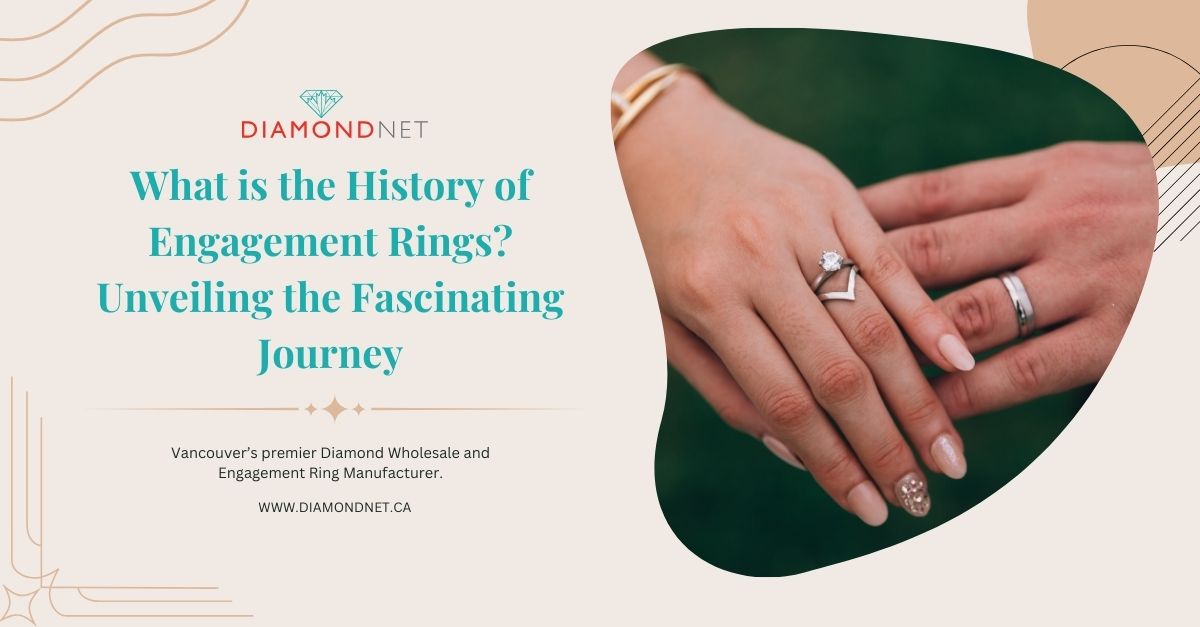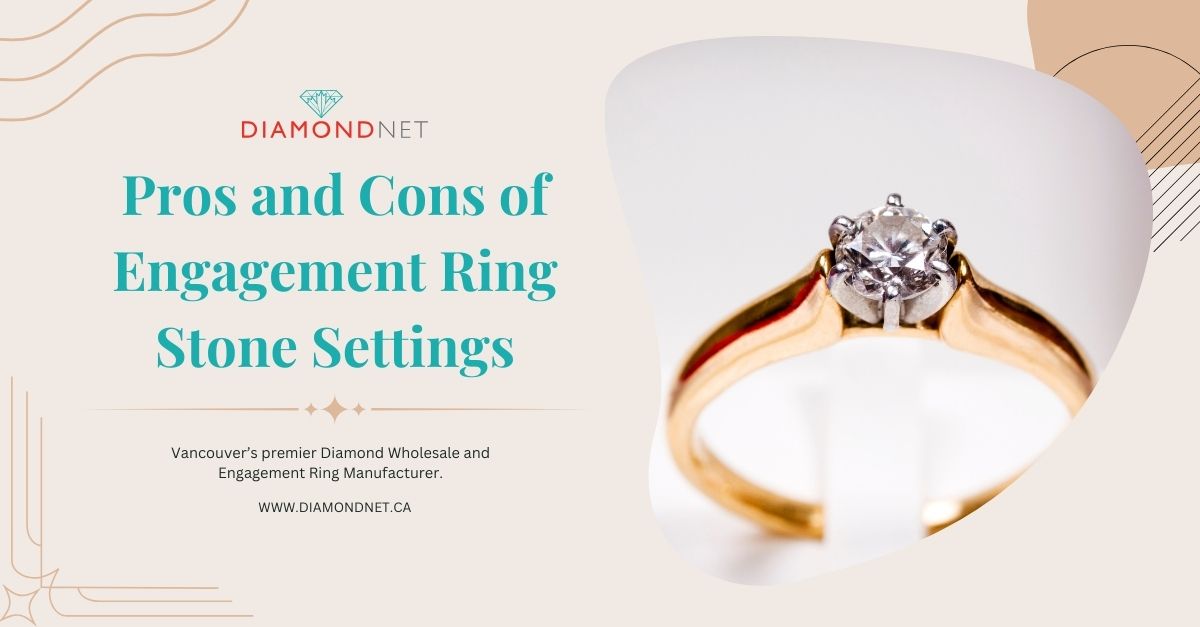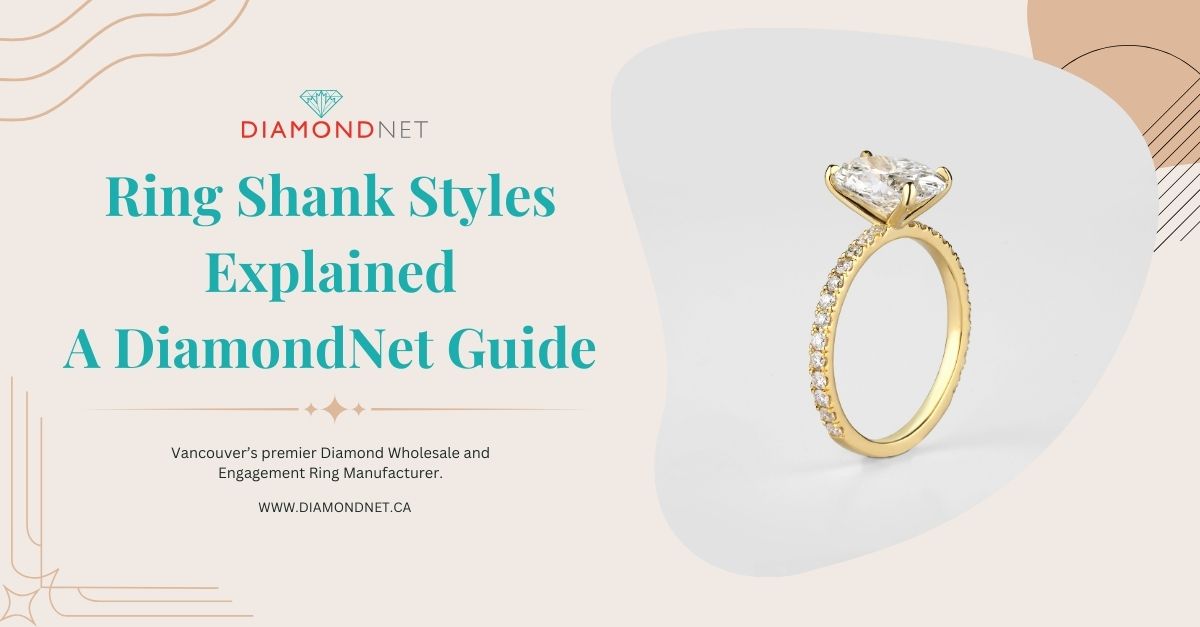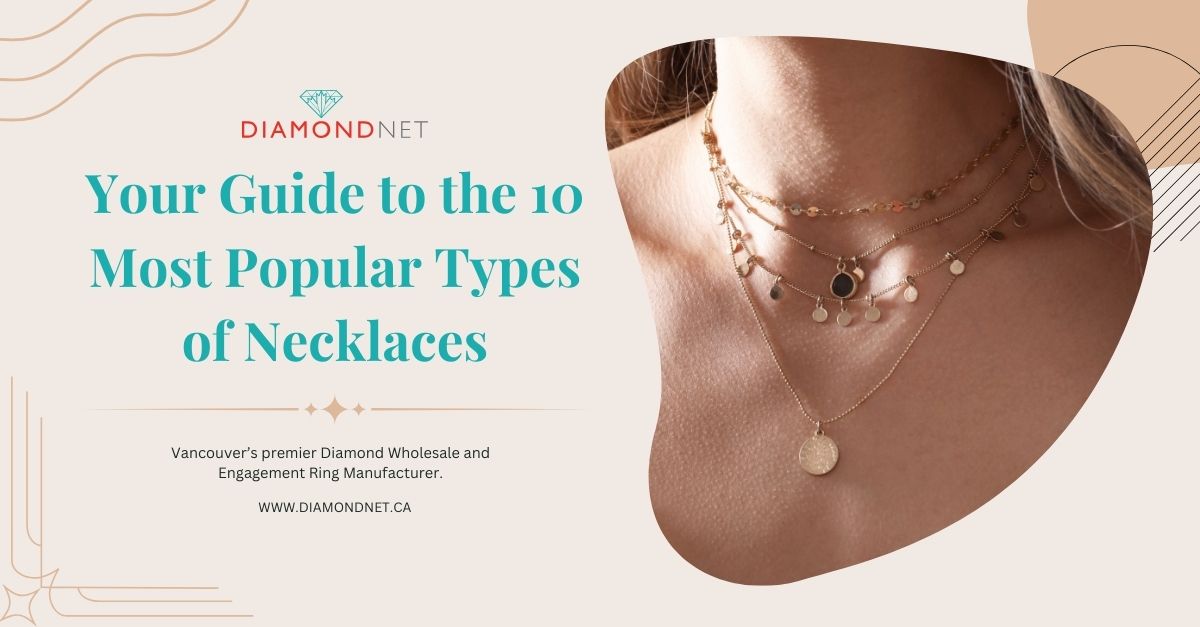Engagement rings have long symbolized love, commitment—and, at times, something far more complicated. Though cherished today as expressions of romance, their origins reveal a different story: one tied to power, ownership, and tradition.
From ancient rituals to royal marriages to 20th-century marketing campaigns, the evolution of the engagement ring spans thousands of years and multiple cultural shifts. Along the way, it’s absorbed new meanings—some beautiful, some difficult.
At DiamondNet in Vancouver, we believe that understanding the journey behind your ring makes choosing one even more powerful. We specialize in ethically sourced diamonds, custom craftsmanship, and modern design, helping couples select rings that reflect both their story and their values.
Join us as we trace the fascinating path of the engagement ring—from ancient contracts to personal expressions of love—and how it continues to evolve today.
Here is the Quick Answer:
Engagement rings have evolved from ancient symbols of ownership to modern expressions of love and personal values. From Ancient Egypt to the De Beers marketing boom, the ring’s role has shifted with culture and time. Today’s couples are rewriting the tradition with ethically sourced diamonds, lab-grown stones, and custom designs that reflect their unique story.
Ancient Promises: Ownership Over Romance
The earliest engagement rings weren’t symbols of love—they were declarations of ownership. In Ancient Egypt, couples exchanged simple bands made of hemp or leather, worn on the fourth finger of the left hand due to the belief in a “vein of love” that led directly to the heart.
But by the time the Romans adopted the practice, the gesture had shifted. Rings made of iron—and later gold—served as legal markers. Rather than romance, they signified a binding agreement that the bride now belonged to the groom. Status and symbolism were tied more to control than affection.
Though far from the romantic gesture we associate with engagement rings today, these early traditions laid the foundation for a ritual that would gradually take on deeper emotional meaning.
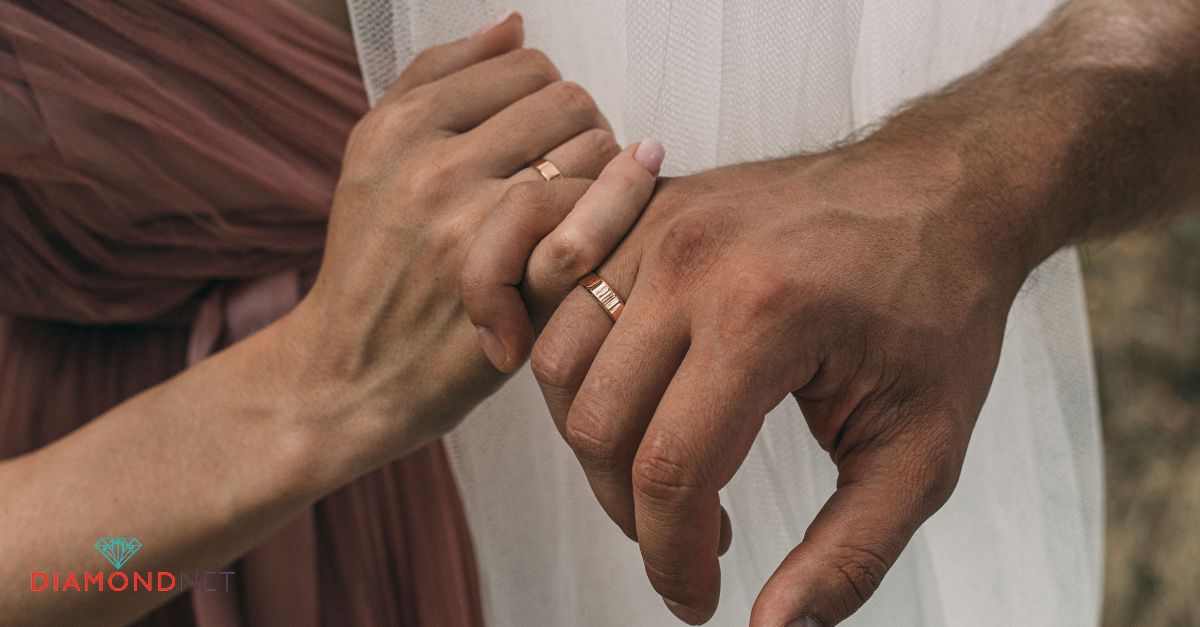
From Piety to Passion: Medieval Europe’s Shift
In the 12th century, marriage became more formalized under Church influence. Pope Innocent III introduced a waiting period between engagement and marriage, elevating the ring from a transactional token to a visible promise of intent.
During this period, romance began to play a larger role. Rings were often inscribed with poetic phrases, while the wealthy started embellishing them with gemstones. These symbols moved beyond contracts—they became personal.
One landmark moment came in 1477, when Archduke Maximilian of Austria proposed to Mary of Burgundy with a diamond ring shaped like the letter “M.” Though rare at the time, this gesture helped spark a trend for diamond engagement rings among European nobility.
Sentiment & Sparkle: Victorian to Edwardian Era
The Victorian era ushered in a wave of romance that deeply influenced engagement ring design. Queen Victoria’s own ring—a coiled serpent with an emerald head—symbolized eternal love and set a trend for deeply personal pieces.
Rings from this time often featured floral motifs, engraved details, and colourful gems like rubies, sapphires, and emeralds. Every element was symbolic, and each ring told a unique love story.
As the 1900s approached, the Edwardian era introduced a more delicate aesthetic. Platinum became the preferred metal—strong enough for daily wear, yet light and flexible enough for intricate work.
Jewellers embraced this material to create lace-like designs, using fine filigree and milgrain details. Diamonds began to dominate, and craftsmanship took centre stage, blending precision with elegance.
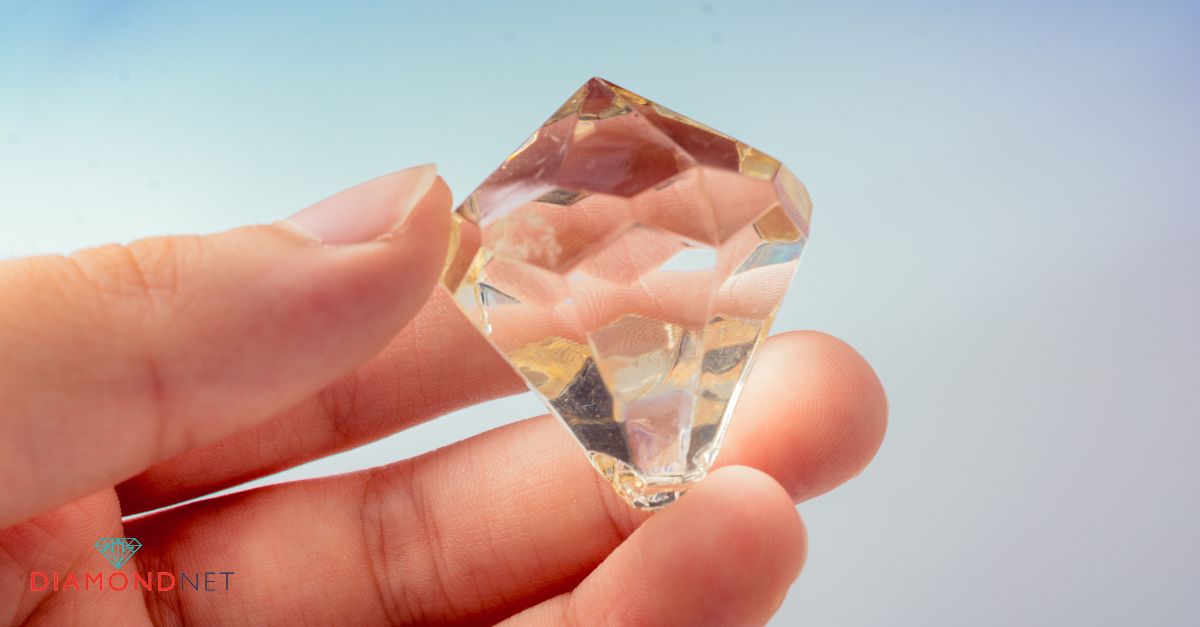
Behind the Shine: A Colonial Legacy
The sparkle of a diamond hides a more complex history—especially from the late 1800s onward. When diamonds were discovered in South Africa, colonial powers rushed in to control the mines and the profits.
De Beers, a company that soon came to dominate the diamond trade, engineered global supply and pricing. This consolidation didn’t just shape the market—it also masked the human cost.
Beneath the glamour, many miners faced harsh conditions. Land was seized, labour was exploited, and communities bore the brunt of wealth extraction.
Later, in the 20th century, the problem deepened. Some diamonds were used to fund civil wars in parts of Africa—earning the term “blood diamonds.” These stones financed violence, displaced families, and destabilized regions.
While today’s ethical standards have improved, this legacy remains an essential part of the story. Understanding where a diamond comes from is as important as how it shines.
“A Diamond Is Forever”: The Line That Changed Everything
In 1947, everything changed—thanks to a single, unforgettable line: “A diamond is forever.”
De Beers, the dominant player in the diamond industry, launched this slogan as part of a campaign to boost demand in the post-war era. The result? It didn’t just work—it redefined the engagement ring itself.
Diamonds, once reserved for royalty or the ultra-wealthy, suddenly became the universal symbol of commitment. Hollywood embraced the sparkle. Magazines promoted the dream. And couples across North America—and eventually the world—began to believe that no proposal was complete without a diamond ring.
But this wasn’t rooted in ancient tradition. It was a carefully crafted marketing strategy. Brilliant, yes—but also manufactured.
Today, couples are more discerning. The focus has shifted toward transparency, ethics, and meaning. At DiamondNet, we believe your ring should reflect you—not a slogan. That’s why we prioritize honesty, sustainability, and quality craftsmanship over outdated myths.
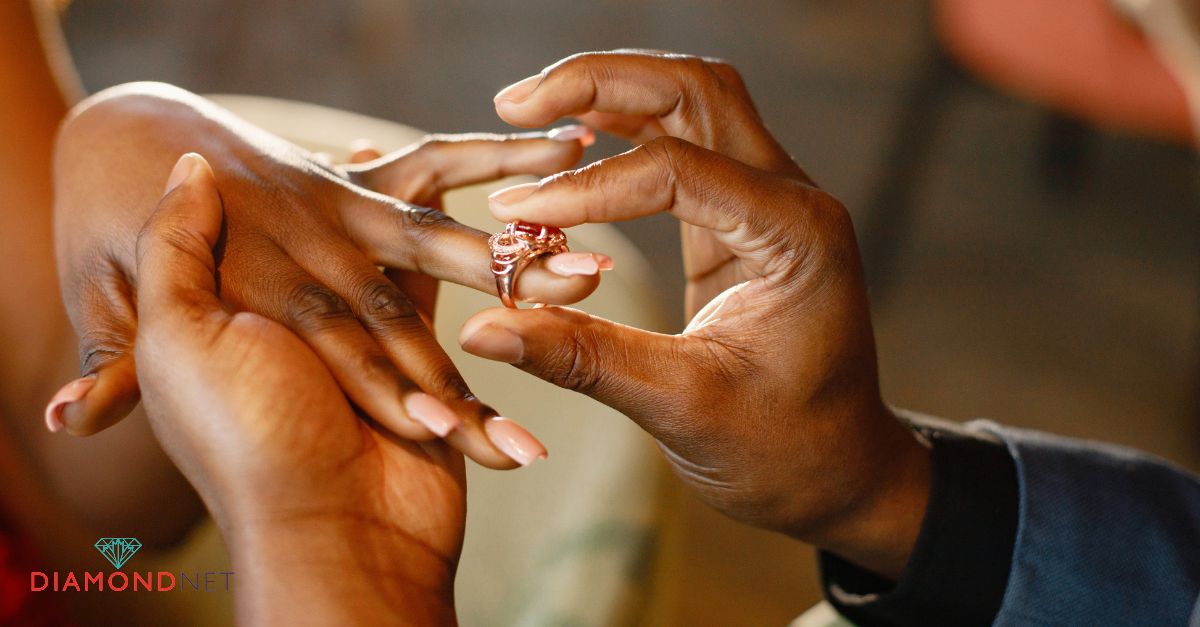
One Ring Doesn’t Fit All: Global Perspectives
While the diamond engagement ring became a cultural staple in North America and Europe, that wasn’t the case everywhere.
In countries like Japan and China, the trend took hold much later—largely due to global marketing campaigns and the influence of Western films. For many, diamond rings were introduced as symbols of modern romance rather than longstanding tradition.
Now, the trend is shifting again.
Couples around the world are rewriting the rules. Coloured gemstones, vintage heirlooms, lab grown diamonds, and custom settings are gaining ground. Some are drawn to sustainability. Others want a design that feels personal, not prescribed.
The common thread? A desire to express love in a way that feels real, meaningful, and true to them—not dictated by decades-old norms or advertising.
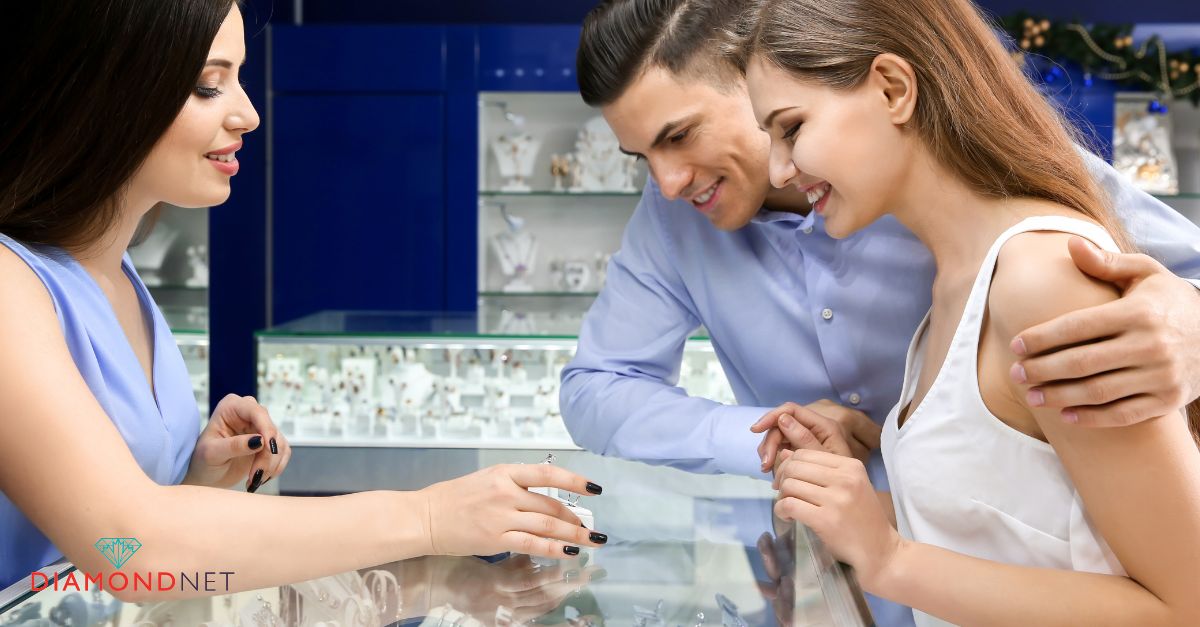
Today’s Rings: Custom, Ethical, Personal
Modern engagement rings are no longer about following one tradition — they’re about choosing what feels right for you. Couples today are prioritizing individual style, ethical sourcing, and thoughtful design.
Instead of defaulting to what’s expected, they’re asking questions:
➤ Where did this diamond come from?
➤ Can I use a lab-grown stone or recycled gold?
➤ Can we design something together that reflects our story?
This shift has opened the door to more meaningful pieces — from vintage-inspired designs to minimalist solitaires, from non-traditional gemstones to rings that use heirloom materials.
At DiamondNet, we see this change daily. Couples visit our Vancouver showroom not just to browse, but to collaborate— to create rings that are beautiful, intentional, and unique. Rings that speak to values as much as they do to taste.
Final Thoughts
The engagement ring has never meant just one thing.
From ancient symbols of ownership to declarations of love, from royalty to personal milestones — its meaning has constantly evolved. And today, you have the freedom to decide what your ring represents.
At DiamondNet, we believe that every ring should tell a story — your story. Whether you’re continuing a cherished tradition or starting a new one, we’re here to help you design a ring that reflects your values, vision, and style.
From ethically sourced diamonds to lab-grown brilliance, from classic minimalism to bold custom work, our team offers the expertise and care to guide you through every step.
Let’s create something that’s not just beautiful — but meaningful.
Book a one-on-one consultation at our Vancouver showroom today and start crafting a ring that feels truly yours.
